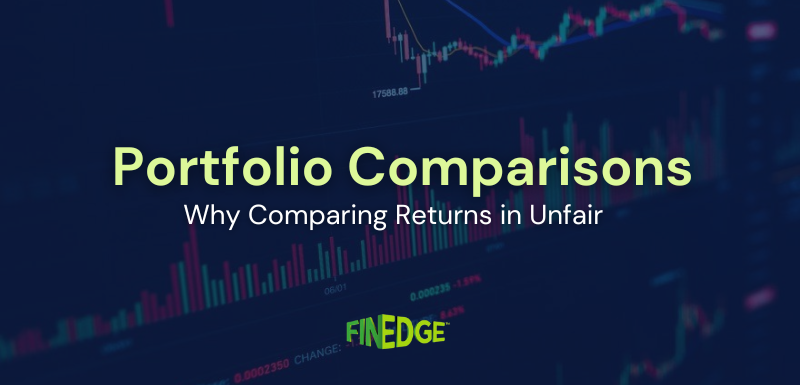Equity Savings Funds: The Perfect Blend of Safety, Growth, and Tax Efficiency
- Discover how an Equity Savings Fund blends equity, debt and arbitrage.
- Learn their tax benefits and SEBI’s hybrid fund framework.
- Understand the new capital-gains rules for FY 2025–26.
- See how they fit within a goal-based investment plan.
In a market where investors want growth without volatility, Equity Savings Funds offer a disciplined middle path. They combine the growth potential of equities, the stability of debt, and the hedging benefit of arbitrage funds. For conservative investors seeking low-risk mutual funds with mutual fund tax efficiency, these schemes offer stability, discipline, and clarity core principles of FinEdge’s goal-based approach.
What Is an Equity Savings Fund?
An Equity Savings Fund is an open-ended hybrid mutual fund that invests in three segments equity, debt, and arbitrage.
SEBI rules require these funds to hold at least 65 % in equities, but much of this is hedged through arbitrage, keeping risk low. The rest is invested in debt securities for steady income. This blend gives investors equity like tax benefits while maintaining a risk profile close to debt funds.
How Do They Work?
|
Component |
Typical Allocation |
Purpose |
|
Unhedged Equity |
20–30 % |
Generates capital appreciation |
|
Hedged / Arbitrage Equity |
35–45 % |
Reduces market risk through arbitrage |
|
Debt Instruments |
20–35 % |
Provides income stability |
Arbitrage means buying a stock in the cash market and selling it simultaneously in the futures market to capture a small, risk-free profit. This approach keeps volatility low while preserving equity-fund tax status.
Why Invest in Equity Savings Funds?
-
Tax Efficiency: Equity-oriented tax rules reduce your tax outgo.
-
Lower Volatility: Debt and arbitrage components smoothen returns.
-
Diversification: Exposure to multiple asset classes in one fund.
-
Goal Fit: Ideal for 1-3 year objectives needing stability and growth.
-
Beginner-Friendly: Great starting point for investors migrating from FDs.
Points of Caution
-
Expect Moderate Returns: Typically 6–8 % per year in steady markets.
-
Fund-Manager Skill Matters: Allocation decisions impact outcomes.
-
Arbitrage Spreads Vary: Low volatility can reduce profits.
-
Complementary Investment: Best used alongside pure equity and debt funds.
Taxation in Equity Funds (Updated for FY 2025–26)
-
Capital Gains Definition: Profits from selling or redeeming mutual-fund units are taxed as capital gains based on the holding period.
-
Short-Term Capital Gains (STCG):
-
Applies when units are redeemed within 12 months of purchase.
-
Tax rate: 20 % flat (effective July 23, 2024).
-
For SIPs, each installment is a separate investment; the FIFO method determines which units are sold.
-
Long-Term Capital Gains (LTCG):
-
Applies when units are held for over 12 months.
-
Tax rate: 12.5 % flat (applicable from July 23, 2024).
-
Exemption: The first ₹ 1.25 lakh of cumulative LTCG from all equity oriented investments per financial year is tax-free. Gains beyond this are taxed at 12.5 % without indexation.
Who Should Invest in Equity Savings Funds?
-
-
Investors seeking steady, tax-efficient returns with low volatility.
-
Those moving from fixed deposits to market-linked products.
-
Retirees prioritizing capital preservation and modest growth.
Why It Matters: Equity-oriented schemes like Equity Savings Funds remain far more tax-efficient than debt funds, which are taxed at an investor’s income-slab rate.
-
FAQs
Your Investing Experts
Continue Reading
From Coffee to Crorepati: Small Lifestyle Tweaks Gen Z Can Make to Start Investing Early
Gen Z is often told to “stop buying coffee” if they want to invest. But that misses the point. Building wealth isn’t about sacrificing everything you enjoy. It’s about understanding how small, everyday decisions shape long-term habits. Starting early even with modest amounts can quietly make a meaningful difference over time.
Why Comparing Investment Returns Can Be Misleading
At some point, most investors have compared their investment returns with a friend, a colleague, or a number they saw online and wondered why their outcomes looked different. While this instinct is natural, return comparisons are often incomplete and, in many cases, misleading. Understanding why returns differ is far more important than comparing the numbers themselves.
CAGR vs XIRR vs Absolute Return: Understanding Which Return Really Matters
When reviewing investment performance, investors often come across multiple return figures absolute return, CAGR, and XIRR. While these numbers may appear similar, they measure performance very differently. Understanding what each metric represents, and when to use it, is essential for making informed investment decisions and setting realistic expectations.
.png)
.png)

.png)